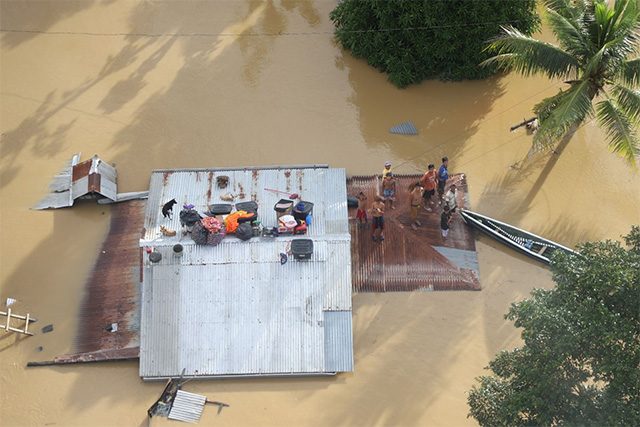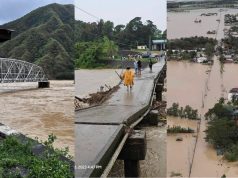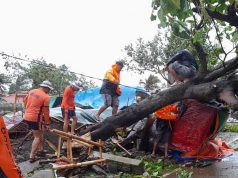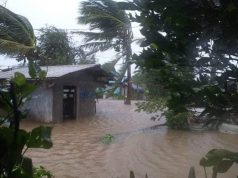
The importance of scientific-based solutions was raised online to solve the relentless flooding in Cagayan Valley in the wake of recent strong typhoons.
Cagayan Valley or Region II, particularly the provinces of Cagayan and Isabela, were among the areas affected with widespread flooding following the onslaught of Typhoon Ulysses last week.
The Climate Change Commission Philippines re-shared the lengthy post of Mayor Cristina “Tin”Antonio of Alcala town in Cagayan where she aired her reflection based on the study of Dr. Fernando Siringan, a geologist and former head of the University of the Philippines Marine Science Institute.
The municipality of Alcala is one of the areas in Cagayan severely affected by the heavy downpour and Magat Dam’s sudden release of water.
“Flooding in Cagayan Valley had been studied by one of the country’s leading geologists and former head of the UP Marine Science Institute, Dr. Fernando Siringan. A reflection from Mayor Tin Antonio of Alcala town, one of the worst-hit by Typhoon Ulysses, reveals that their community’s adaptation to flood risk can be achieved not by a single solution but by a combination of interventions,” the policy-making agency said on Monday.
Alcala town mayor’s insights
The climate commission also cited quotes from Antonio’s post, wherein she stated that the flooding problem in the municipality of Alcala and the entire Cagayan Valley should be attributed to the people’s lifestyle, rather than just the Magat Dam that supplies their water.
The provincial mayor posted this lengthy reflection on Sunday, November 15.
“My insight is that the problem of flood in Alcala and Cagayan Valley cannot be attributed to just one cause outside of us, but to a complex, interrelated web with us right at the center. It’s not just about Magat Dam protocols, although in our state of despair Magat Dam is the most visible target. It’s about us, it’s the way we live — as if we are apart from nature, as if what we do does not come back to us. It’s us — how we have cut our trees and destroyed our forests, our soil and groundwater, how we have eaten up the land with farms and buildings,” Antonio said.
Given that the problem is complex, she noted that the solution is also a “combination of interventions that should be anchored on science.”
“The problem being complex, the solution is also a combination of interventions that should be anchored on science and drawn after scientists have studied the Cagayan River itself, after they have walked its banks, felt its current, followed its meander, and seen it in its ebbs and flows,” Antonio said.
“It is not dredging every which way, it is not putting up a dike here and there. It is knowing, based on sound science, what to do and what not to do where in the whole length of the mighty Cagayan River, the longest and largest in the country,” she added.
Her insight was based on the study of Siringan and another scientist Keanu Jershon Sarmiento whom her office and other local officials sought help for back in December 2019 when they experienced a similar deluge which they called “100-year flood.”
She said Siringan clarified that a 100-year-flood means a “flood with 1% probability or chance of taking place each year.”
Antonio then narrated that based on the findings of this study, they started to implement and plan several changes. However, the most challenging was the river channel widening from Tupang, Alcala to Magapit, Lallo.
She noted that this was also mentioned in a 1987 study by the Japan International Cooperation Agency called “The Feasibility Study of the Flood Control Project for the Lower Cagayan River in the Republic of the Philippines.”
“This work would help not only Alcala, but the whole Cagayan Valley Region, tremendously,” Antonio said.
Other similar proposals
Environment organizations Greenpeace Philippines and Youth Strike 4 Climate Philippines called for the national government’s accountability in the worsening climate crisis in the country.
To our foreign friends, PHILIPPINES needs your help!
There is no noise or international media coverage happening wherein the Philippines is ravaged by 8 typhoons in less than two months!#ClimateEmergency #ClimateJusticeNow #CagayanNeedsHelp #RescuePH pic.twitter.com/KdzjyAHBiz
— Youth Strike 4 Climate Philippines 🌏🇵🇭 (@youth4climatePH) November 13, 2020
Quinta, Rolly, Siony, Tonyo, then #UlyssesPH. Once again, Filipino communities are bearing the worst impacts of the climate crisis. This is not another story of resilience, but another reason to demand ACCOUNTABILITY. pic.twitter.com/M0BUu6x8aB
— Greenpeace Philippines #ClimateEmergency (@gpph) November 12, 2020
During his address at the 37th Association of Southeast Asian Nations summit, President Rodrigo Duterte also demanded climate justice from developed countries in the world.
“This is their moral responsibility from which there should be no escape. Otherwise, it would be great injustice – a double blow to those who bear the brunt of the adverse consequences of their past actions and present inactions,” he said.









